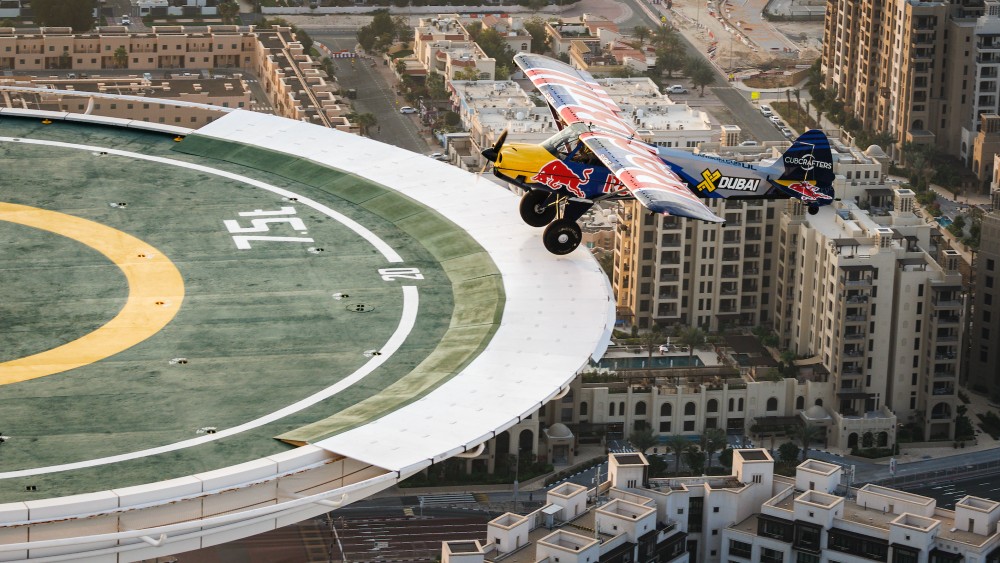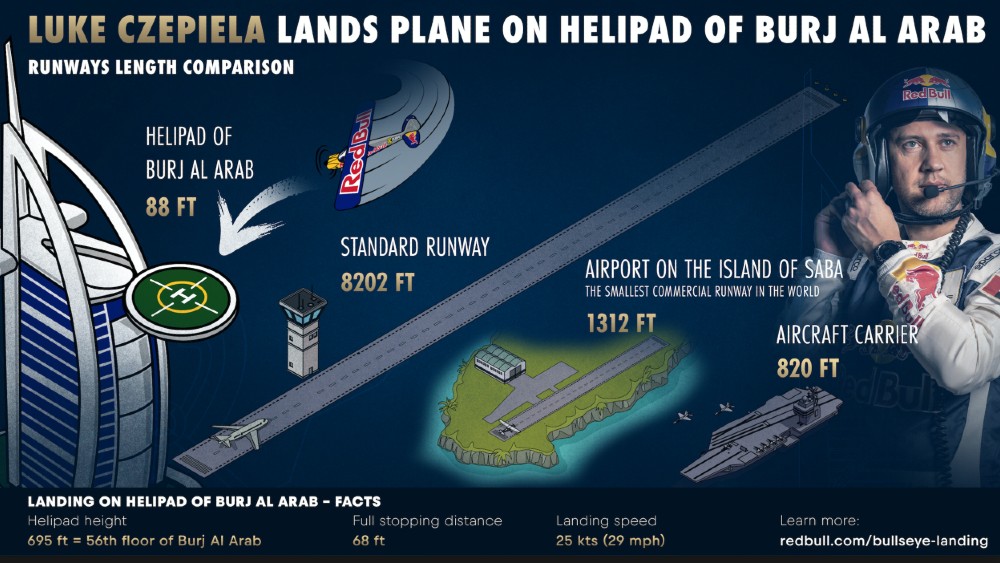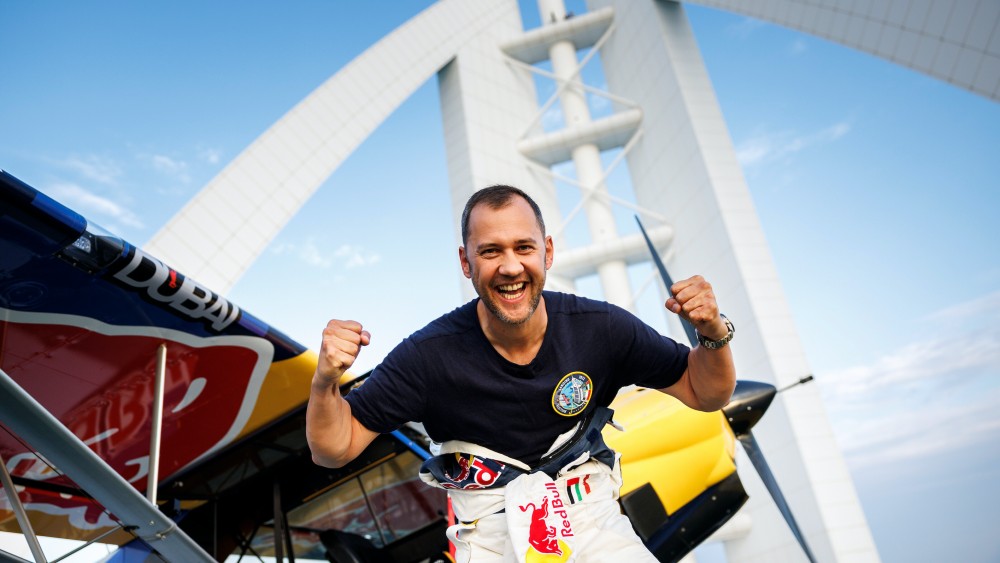Landing an airplane 700 feet above the ground on a tennis-court-sized space sounds crazy. But Luke Czepiela did just that yesterday, when he touched down on the helipad of the Burj Al Arab Jumeirah in Dubai, stopping perilously near the edge.
The 39-year-old pilot had just 88 feet to land his Carbon Cub atop the iconic tower. The average runway is 8,200 feet. Even an aircraft carrier has ten times more landing space.
“I couldn’t feel happier,” said Czepiela, awash in adrenaline, after landing. Minutes later, he piloted the aircraft in a dramatic display of aerobatics off the edge of the tower, flying over the beach to cap the record-breaking landing.

Czepiela, a commercial pilot who flies Airbus 320s in his day job, had been rehearsing this tricky, dangerous landing for the last two years—650 times, in fact. One of a half-dozen remaining members of Red Bull’s Air Racing Team, the pilot began practicing the maneuver in his native Poland, and then on helipads in Arizona and Utah, in the specially modified short takeoff and landing (STOL) Carbon Cub.
“When I first started, the success rate was 20 percent,” he told Robb Report, just after the flight. “But near the end we got it up to 100 percent.”
Publicity stunts have become something of a side trade for the 56-story Dubai tower.
In 2005, Andre Agassi and Roger Federer played a set on the helipad, and in 2013, David Coulthard did donuts in a Formula 1 car. But there was little chance the tennis players and Formula 1 driver could crash land or, worse, slide off the side of the building.

In preparation for the flight, the carbon-fiber STOL had been modified by US aviation builder Mike Patey, who dropped nearly 150 lbs. from the overall weight. The Carbon Cub weighed just shy of 1,000 lbs. for the record flight. “Mike also added a nitrous-oxide system that gave me the equivalent of 230-hp for ten seconds—perfect for takeoff,” says Czepiela. The extensive planning behind the flight, he added, made it “crazy but not stupid.”
It was clearly dangerous. Unlike landing on the ground, Czepiela didn’t always have sight of the helipad as he flew upwards. A safe landing also required more than five knots of headwind. The breeze was too light on the first two approaches, but on the third, the wind was a perfect seven knots.

“I could hear Mike’s voice in my headset that it was seven knots,” says Czepiela. “I said to myself, ‘let’s drop this baby down on the pad.’” The Carbon Cub’s approach speed was a mere 25 mph—four mph above its stall speed, leaving little room for error.
Czepiela nailed it, landing on the outer edge of the circular H pad. Elated, he jumped out of the plane and hugged his team, who were all going crazy on top of the tall building. “We landed a plane on a helipad!” he shouted.
“The icing on the cake was taking off from the tower,” says Czepiela. Flicking on the nitrous-oxide gave him a sudden burst of power, and after he cleared the side, the pilot used his aerobatic skills for an impromptu show above the beach. He made a safe landing at SkyDive Dubai, where he’d started 16 minutes earlier. “I feel awesome,” he said after the landing. “There is no other word to describe it.”







